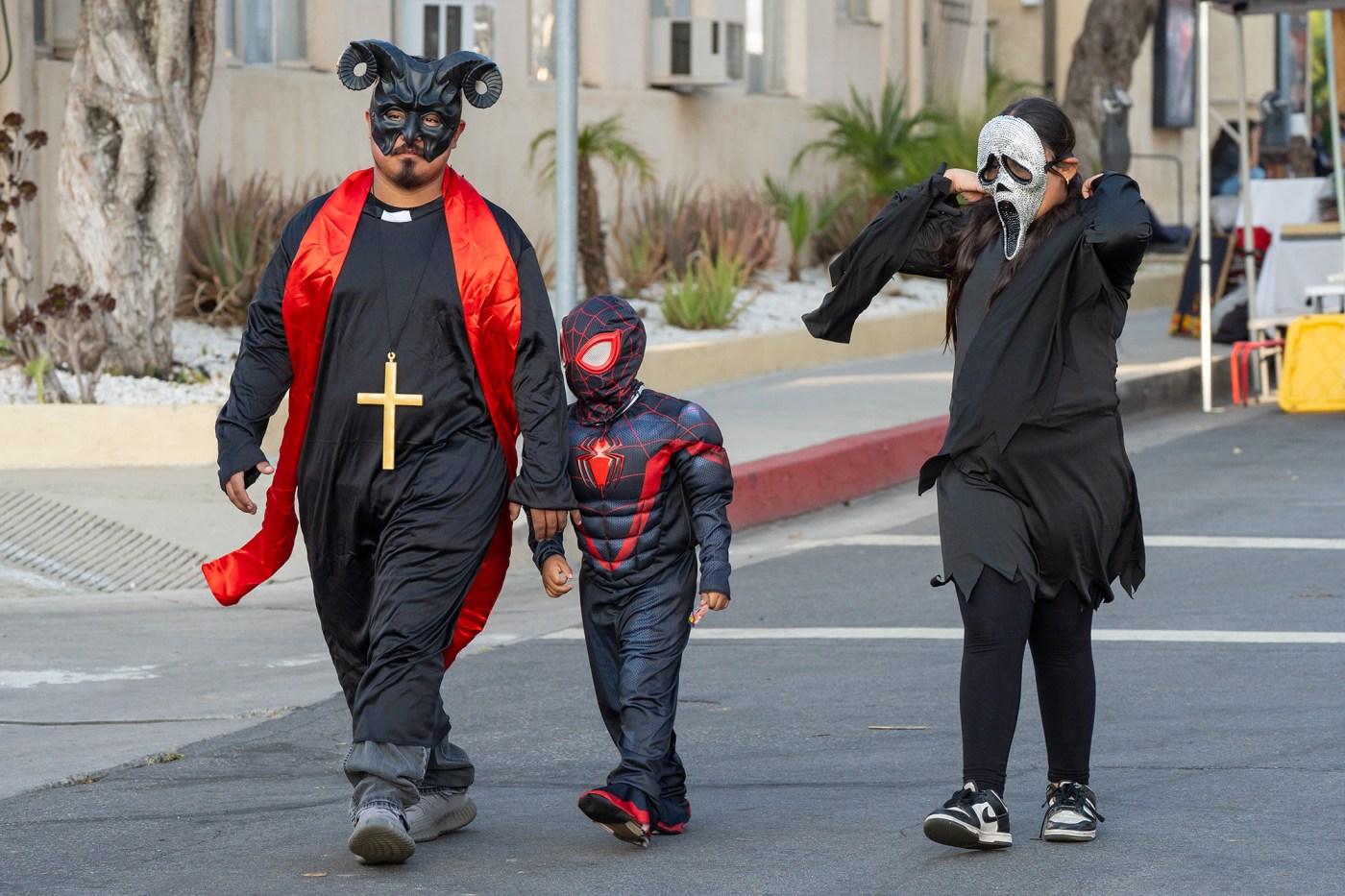As thousands of kids prepare to hit the streets in Southern California dressed as famous figures like Labubus, pop stars, and monsters this Halloween, local authorities are sharing important safety tips to help trick-or-treaters grow their candy bounties safely.
Despite frequent viral claims about Halloween candy being laced with drugs, metal, or other dangers, pedestrian safety remains the primary concern for health care professionals. Helen Arbogast, who leads the injury prevention program at Children’s Hospital Los Angeles (CHLA), noted that children, especially those aged 4 to 12, are more likely to be hit, killed, or injured by vehicles on Halloween compared to other days of the year. Hospitals such as CHLA have observed an increase in pedestrian injuries on Halloween.
“It’s a busy time, but it’s late in the day and you have some of the less practiced pedestrians on the road,” Arbogast said. “We do see a fair amount of children who are hit by cars, who have falls; they might trip.”
Experts emphasize that, beyond concerns about candy tampering, road safety should be the top priority for families taking kids trick-or-treating. There are many ways families can reduce this risk by making their trick-or-treaters more visible.
Adults can carry flashlights, apply reflective stickers on children’s costumes and accessories, and place glow sticks in candy bags or give them to kids as necklaces and bracelets. When Arbogast takes her family and others trick-or-treating, she wears a yellow vest with reflective patches. The adults in the group carry flashlights and surround the children as they walk to increase visibility.
Sgt. Nick Jensen of the Garden Grove Police Department also practices safety by ensuring there is an adult at the front and back of his group, each with a flashlight to help drivers see them and to spot obstacles in dimly lit yards and driveways. His group travels together, visiting each home as a unit and not moving to the next until an adult has done a head count.
“Keep them kind of on a short leash, per se, because kids, they’re kids,” said Officer Ryan Railsback with Riverside Police. “They like to dart out in traffic, and they get distracted really quick.”
Railsback shared that when his children were of an age to trick-or-treat, he planned a route in advance and had a good idea of how long it would take. His kids knew not to knock on a door unless he was with them. He encouraged parents to accompany younger children door-to-door but said that for older kids, supervision from a sidewalk with a clear view of the door is also effective.
Parents should also educate their children on traffic safety, particularly if they do not frequently walk at night. Arbogast recommends teaching kids to look both ways before crossing the street, to cross only at corners and marked intersections, to make eye contact with drivers before stepping onto the road, and to watch for headlights or backup lights.
Since the COVID-19 pandemic, some families have started driving alongside their children while trick-or-treating. However, Arbogast encourages adults to walk with kids to help them get active, engage in the community, and learn pedestrian safety through practical experience.
“When you get to an intersection, don’t do the work for them,” Arbogast said. “Don’t look both ways and not teach them to look both ways, because if they’re walking with you and relying on you to do all the safety components, when they’re alone, they’re not going to know what to do.”
With middle and high schoolers increasingly using e-bikes and e-scooters, Arbogast also urges families to keep an eye out for these riders. She advises that older kids trick-or-treat on foot since e-bikes and e-scooters are often quieter than cars and can reach speeds up to 28 miles per hour, while often being ridden on sidewalks.
Drivers are urged to slow down between approximately 5 p.m. and 9:30 p.m. and to be especially vigilant during this time. Arbogast suggests turning down music and other distractions, keeping vehicle lights on, and staying alert when driving on the road or entering and exiting driveways.
“Even as you’re coming home from work and ready to get to dinner,” Arbogast said, “be thinking about other families that may have started trick-or-treating.”
While confirmed cases of candy tampering remain rare, Arbogast encourages parents to check their children’s candy at home to ensure all items are properly wrapped and sealed.
Regarding costumes, parents should make sure their child’s attire fits well and does not present any tripping hazards. Using makeup instead of masks can help improve visibility.
Anaheim police have also advised families not to allow children to carry prop guns or other weapons that could be mistaken for real firearms.
Finally, Sgt. Jensen reminds adults attending Halloween parties to plan for safe transportation by having a designated driver or using rideshare services if they plan to drink or use other substances.
https://www.twincities.com/2025/10/31/how-to-keep-trick-or-treaters-safe-on-halloween/



